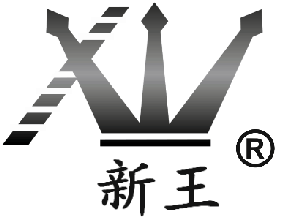

+86-18628829666
100 largest countries-buyers of Chinese aluminum pipes
100 largest countries-buyers of Chinese aluminum pipes
China, as one of the world leaders in the production of aluminum pipes, exports its products to many countries. Imagine a global network where Chinese factories are associated with foreign enterprises that use these pipes in various industries. But what countries are the main consumers of Chinese aluminum? This issue is important for the economy of both parties.
Geography of demand: Key control regions
Of the 100 largest buyer countries, most are concentrated in certain regions of the world. This is due to a number of factors such as developed infrastructures, the availability of enterprises using aluminum in production, and economic relations. Asia, including countries such as India, Vietnam and a number of others, is one of the main regions that absorb Chinese aluminum pipes. Europe, thanks to its industry and high quality standards, also occupies a significant part of the list. It is impossible to ignore Latin America, where the development of construction and industrial industries contributes to demand.
Factors affecting the demand for Chinese aluminum
The high quality of Chinese aluminum, its competitive price and reliability of supplies are factors that attract foreign buyers. At the same time, global economic trends, trade agreements, as well as fluctuations in raw materials, play an important role in the dynamics of procurement. For example, if an economic recession is observed in some country or new standards for products are introduced, this will affect the volume of imports of aluminum pipes.
Aluminum pipes market prospects
The aluminum pipes market is constantly developing. New technologies, new methods of using aluminum, the desire for environmentally friendly materials - all this will affect the demand for Chinese products in the future. It can be assumed that countries with developing industry and construction will continue to occupy a significant place in the market, creating new opportunities for Chinese manufacturers. At the same time, competition in the international market will only intensify, and Chinese companies will need to adapt to changing conditions.
AppropriateProducts
Corresponding products
The best soldproducts
The best -selling products-
 80 sliding
80 sliding -
 95 Jianu is sliding
95 Jianu is sliding -
 85 broken bridge and sliding
85 broken bridge and sliding -
 120 linghane is sash
120 linghane is sash -
 60 broken bridge and sash
60 broken bridge and sash -
 108 Jianu Broken bridge and sliding
108 Jianu Broken bridge and sliding -
 55 broken bridge and sash
55 broken bridge and sash -
 88 Jianu is sliding
88 Jianu is sliding -
 Floor spring door 2
Floor spring door 2 -
 85 Open type of broken bridge and sliding
85 Open type of broken bridge and sliding -
 Floor spring door with a broken bridge
Floor spring door with a broken bridge -
 110 yuisha broken bridge
110 yuisha broken bridge
Connectedsearch
Related search- An aluminum pipe is necessary without
- Chinese manufacturer of bridges with a flat gap
- Manufacturer of non -humane windows OEM
- Chinese car pedals
- Factory of cheap structural aluminum profiles
- Aluminum pipe 1
- Chinese supplier of engine radiators
- The largest buyers of tape aluminum profiles in China
- Chinese manufacturer of the foot pedals
- aluminum








